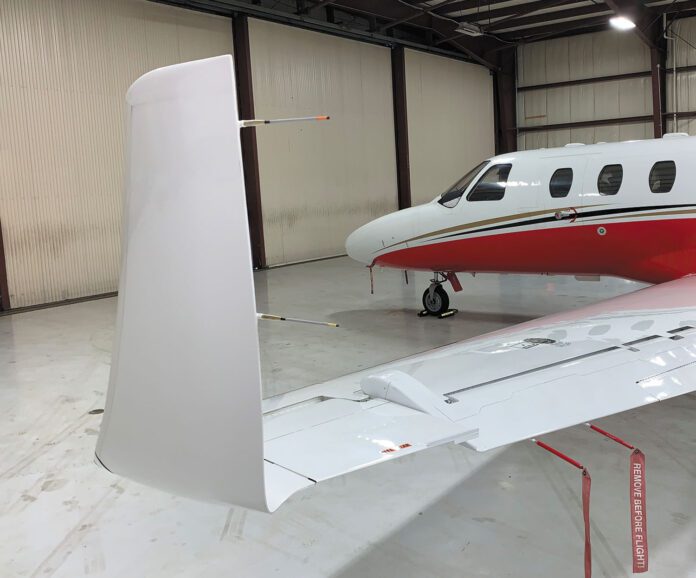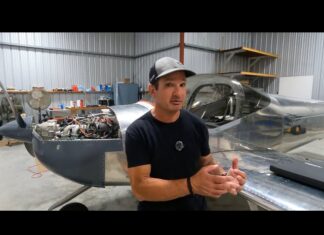This past March, the NTSB and FAA did something we just don’t see often: They reversed previous conclusions about the cause of an accident, which in the initial investigation also implicated an aftermarket STC-approved modification as causing the accident. Flash back to 2018 when a Cessna CitationJet crashed near Memphis, killing the occupants and creating even more controversy because the Citation was equipped with aftermarket ATLAS active winglets made by Tamarack Aerospace.
The Tamarack winglets are paired with control surfaces on the extended outboard trailing edge area of each wing (pictured below) that act as automated ailerons. Sensors monitor the wing loading, deploying a spoiler for dumping lift and relieving the wing structure of overload.
The initial wreck report said the jet’s winglets deployed asymmetrically, causing an uncommanded left roll that advanced to an uncontrolled descent into the ground.
Tamarack’s Jacob Klinginsmith told me the company worked diligently gathering engineering data for a Petition for Reconsideration in January 2022 because of multiple factual errors in the NTSB’s initial report. Klinginsmith said the winglets mostly survived the impact, which offered more useful evidence. There was no flight data recorder, so exact pitch and roll values are unknown. Oddly, the autopilot (not connected to the winglets) disconnected at a shallow bank angle, instead of at a steep one as it’s supposed to. Six years after the crash, the NTSB ultimately agreed with Tamarack that there wasn’t sufficient evidence to conclude that the jet’s left wingtip actuator was asymmetrically deployed during the upset, rescinding its conclusion that the Tamarack system was at fault and revising the report that the pilot couldn’t recover from the upset for unknown reasons.
It’s worth mentioning that in 2018 Tamarack sent out a proactive service bulletin (SB1480) to ATLAS owners recommending a fleet-wide (over 90 aircraft) no-charge replacement of the actuators used in the system within 100 hours of operation or one calendar year. The issue was the potential for a screw to work loose inside the actuator, which in turn would short out components and cause the ATLAS logic to malfunction. Tamarack also offered an optional mod that puts small centering strips on the load-alleviation surface of the ATLAS, which creates a failsafe should an actuator fail. Both of these service bulletins were available long before the FAA ultimately issued an AD against the ATLAS system. Klinginsmith told me there are over 200 ATLAS systems installed and flying in the field, and the company is knee-deep in the STC for retrofitting the winglets (called Smartwing) on select Beech King Air models.
Incidentally, Tamarack set an official NAA (National Aeronautic Association) speed record with a Smartwing-equipped King Air 350. It flew from Spokane International Airport in Washington to Orlando Executive Airport in Florida nonstop, which was 2032 nautical miles, in we’ll under eight hours. On the return trip westbound, the King Air flew 1770 nautical miles from Orlando to Henderson Executive Airport in Nevada in 8 hours 8 minutes, with a stop in Albuquerque.
Extended digital content
As promised when Aviation Consumer shrunk to 24 pages last year, we’re making it up over on the digital side, expanding our Used Aircraft Guide reports to include more owner and technical feedback, images and other material we can’t fit in the paper magazine. When asked what additional material subscribers wanted to see in digital, expanded Used Aircraft Guide content was the unanimous request. I appreciate the help that many readers and support organizations offer for these used reports by sending photos, real-world performance data and good advice to others, and we have unlimited space to host the material digitally. We’ll also use our digital platform to expand other articles as needed.


